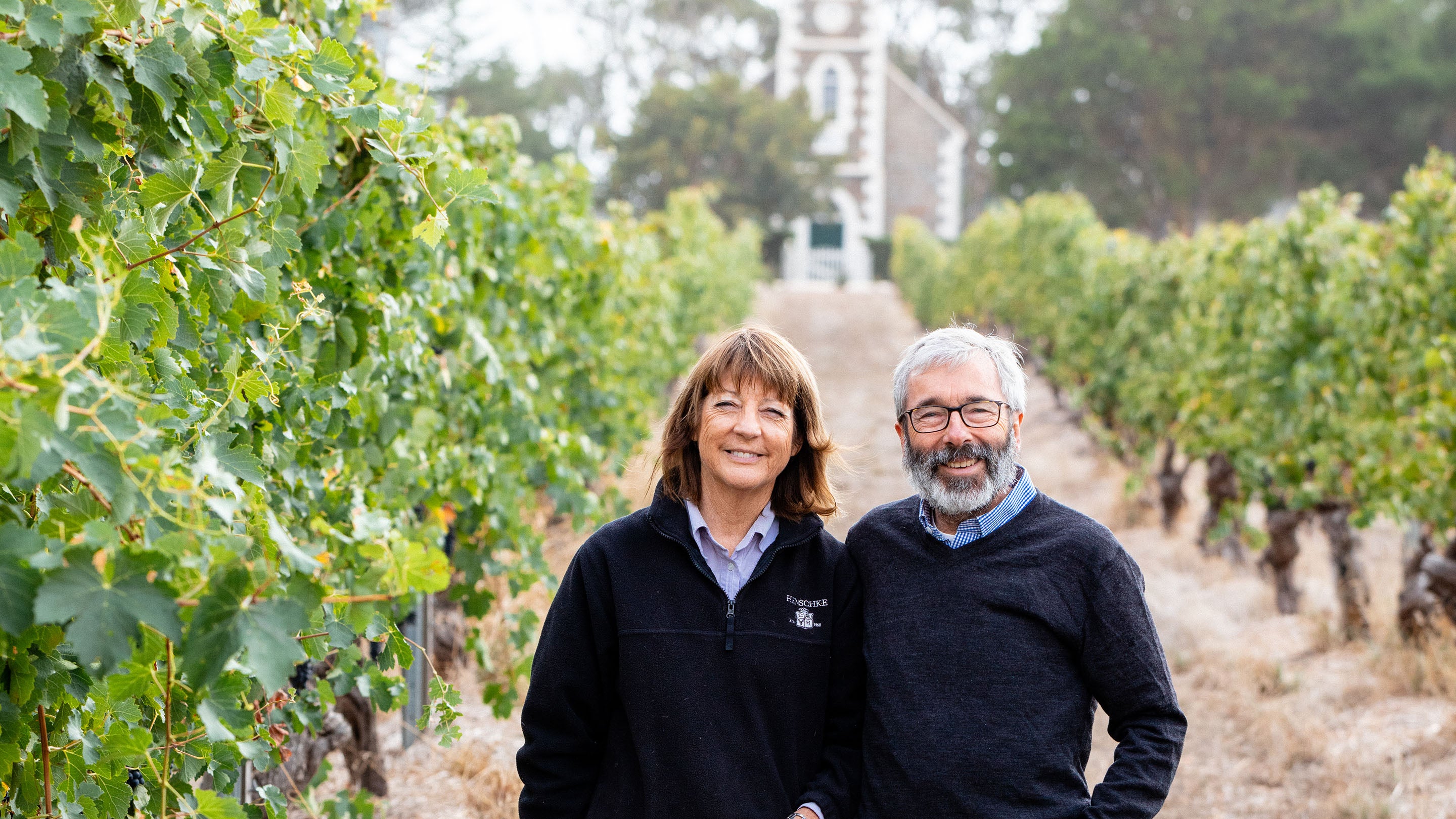Henschke
Barossa Valley , South Australia
Brands
Henschke
Winery Overview
The acclaimed Henschke family, foundation members of Australia’s First Families of Wine, were one of the pioneering families of South Australia when first-generation Johann Christian Henschke migrated from Silesia, Germany in 1841. His first wines were intended for consumption by family and friends, however with the first commercial release in 1868, believed to be primarily Riesling and Shiraz, the wheels were set in motion for greater things to come.
Each generation has contributed to the legend with fourth-generation Cyril Henschke pioneering single-variety, single-vineyard wines in the 1950s, most famously Mount Edelstone and Hill of Grace. Fifth-generation winemaker Stephen and his viticulturist wife Prue have received many accolades for their commitment to quality, innovation and integration of vineyard and winery. With the utmost concern for sustainability, they continue to lead the way with their use of organic and biodynamic practices.
Henschke wines are handcrafted and deeply personal, reflecting a strong sense of place; the wine names tell either a personal story of the family or the cultural history of their region.
Available in
Canada, China, Denmark, France, Germany, Greece, Hong Kong, India, Indonesia, Ireland, Japan, Malaysia, Netherlands, New Zealand, Norway, Russia, Singapore, South Korea, Sweden, Switzerland, Taiwan, Thailand, UK, USA
Seeking Distribution in
Austria, Belgium, Czech Republic, Estonia, Luxembourg, Philippines, Poland, Seychelles, Sri Lanka, Turkey
Winemaker Bio
Stephen Henschke has retained the traditional approach to red winemaking used by his forebears. You can imagine their surprise at finding how ripe the grapes became in their newly adopted sunny country. Their table wines would have been naturally higher in alcohol and fermented dry, due to the warmer conditions. Wine exports towards the turn of the century required fortifying the wines due to microbiological spoilage problems. This technology lasted throughout the war years, until the demand for table wine flourished due to the contribution to our wine and food culture by the newer immigrants from southern Europe, predominantly from Italy and Greece.
The shift from fortified wines meant they picked the grapes ripe to achieve full maturity and to gain intensity of colour, flavour and mature tannins – something that is not out of place for rich, full-bodied reds – while the winemaking itself took a minimalist approach. They handled the wines gently; used minimal racking, low sulphur, gentle fining and filtration, unlike what is so often done today for ‘cosmetic’ reasons. Stephen’s forebears took a puristic, holistic approach that had been passed down from generation to generation so it was almost intuitive. At the ’40 Years of Hill of Grace’ celebration in 1998 when Stephen tasted every vintage – some for the first time – he was struck by how closely he was emulating his father’s winemaking of the late 1950s and the 60s with his minimal intervention techniques.
With today’s advanced viticultural practices, of course, the greatest focus is given to the quality of fruit in the vineyard. And just as success of the reds is largely attributed to fruit quality, so too is the quality of the whites.
If Stephen shows a traditional influence with red winemaking, then it is true to say he has been influenced by his German studies for the whites. In a way he is using the best of Old World tradition coupled with New World technology. He retains a purity of fruit through careful handling of the juice and wine, which brings out the intense, varietally pure perfumes of the natural grape flavours. Combine this with the today’s technology – and taste the resulting whites – and it is clear that Stephen has created a new direction for Henschke that his forebears could never have imagined.


